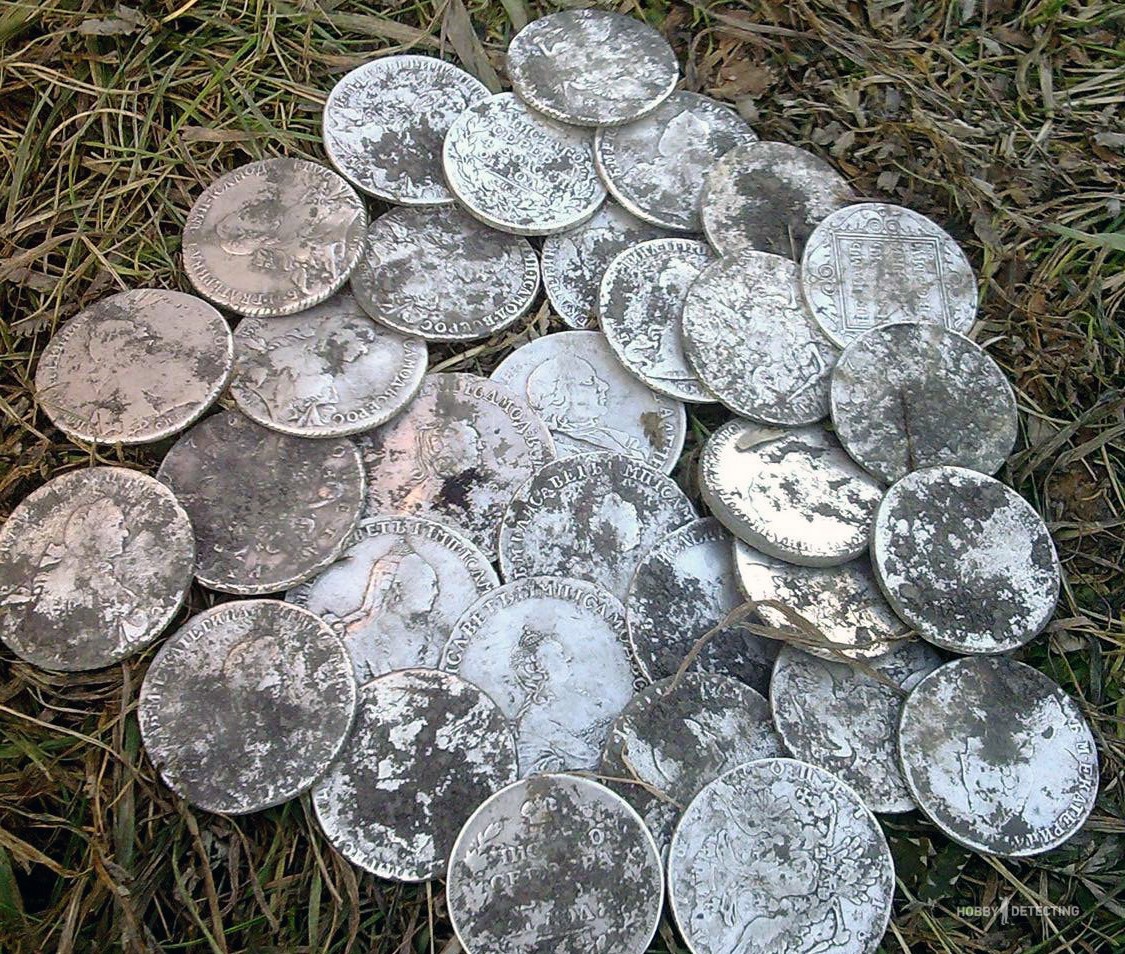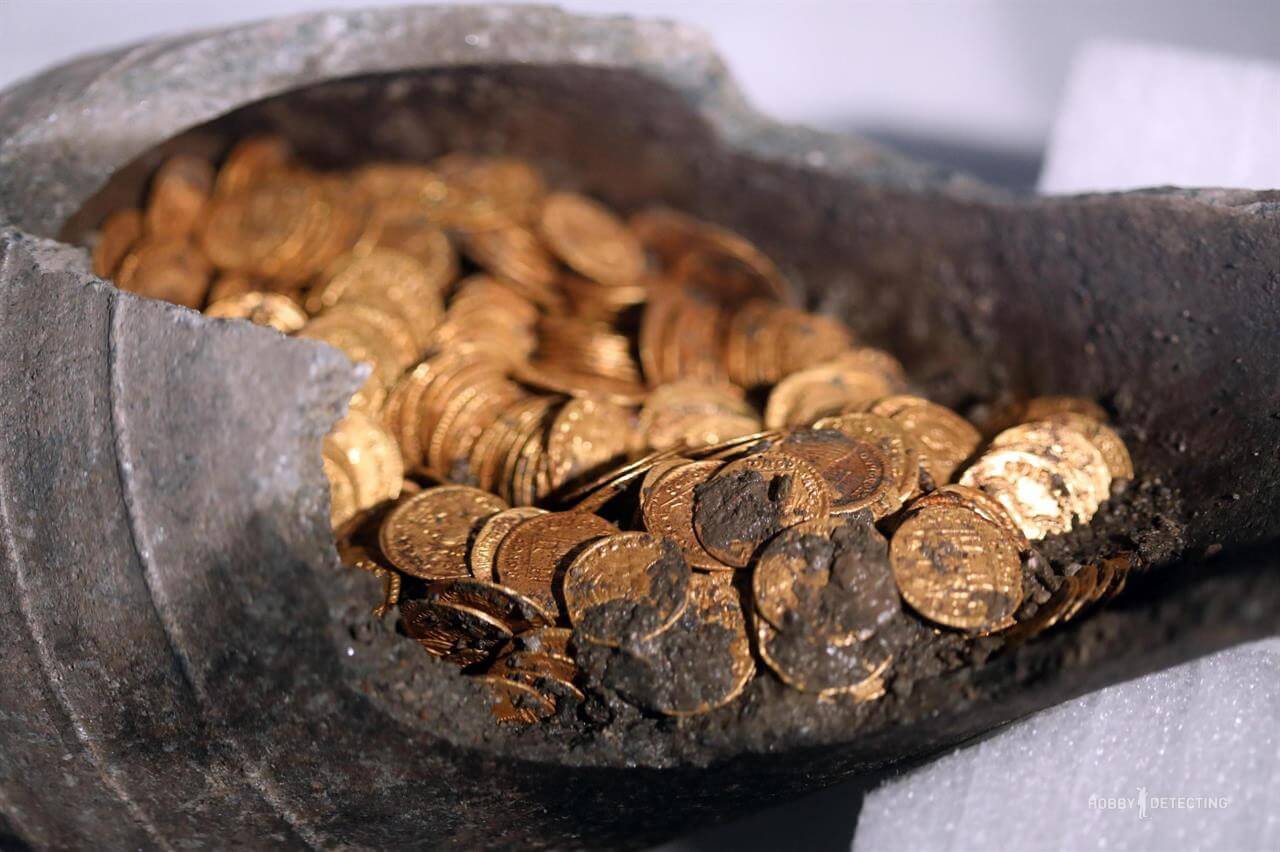The most common types of treasures in Russia
Treasures are different: in terms of content they are cash or clothing, and in essence they are storage. However, you need to remember and understand that behind every treasure found there is hidden its own tragic story, although, I think, the stories were not always tragic. It happened that a man hid his stash from his wife, and he himself forgot where he hid it.
Still, let's get to the point. How will this note differ from many similar ones? And the fact that I will rely on specific statistics from specific archival documents. I will take a rather interesting scientific work as the basis for statistical data. This book is called “Ryazan Treasures” and was written by Moscow historian Vitaly Gorchakov. At the end of the 80s of the last century, the author gained access to archival documents of the Ryazan Accounting Archive Commission.
The fact is that at the end of the 19th century, according to the legislation in force at that time, all found treasures had to be submitted to provincial accounting commissions for study. And there, scientists and educated members of the commissions decided what to do. Leave the treasure to the owner, look for a patron to buy back the entire treasure, or the most interesting part of it.

How it actually worked, I’ll write a separate post someday. Well, in the meantime, based on the development of existing archival records, I will make a kind of TOP 3 of the most common types of treasures.
In third place in terms of prevalence are the so-called thieves' treasures . Not to be confused with robbers. Thieves' treasures are money, usually in large quantities, usually silver, usually hidden near the road.
What is this anyway and how was it formed? Someone stole a large amount of money. This someone could be anyone. A farm laborer for a kulak, a son for careless but wealthy parents, a simple thief who was lucky enough to break in and steal a good amount of money. But, as we understand, in the business of thieves, the main thing is not to steal, but to reliably hide the stolen property. Hide it so that there is free access to the money, but where and how this property is located, other people could not accidentally spy on it.
Therefore, stolen money was usually hidden along the roads. In bushes, reeds or under a bridge. What's the logic here? The farm laborer told his family that he would go to the city to earn money, took the bundle for the road and went. On the way, he turned off the road, as if out of necessity, dug up a pot of money in a conspicuous place, took the required amount, hid the pot, spent a week in the city, and on the way back again into the treasured bushes, took out small things and brought them home, they say, look , earned.

Once again he went to the city “to earn money”, but in a drunken fight he was stabbed in the stomach with a knife, and so the hidden treasure became a treasure.
In second place in popularity, or correctly speaking according to discovery statistics, are treasures that used to be family treasure chests . Savings for a rainy day, savings for a new home, a dowry, or a coffin. In general, banking services in the Russian Empire have never enjoyed much confidence among citizens. Therefore, they saved up, both then and now, in a secret place.
In most cases, such treasures are found either in the middle of the garden or on its outskirts. The whole point is where the bathhouse once stood. Why a bathhouse? A dense frame, with small windows and a massive door. Therefore, when the family left for a fair or to visit relatives, all valuables were locked in the bathhouse.
But this is not the only reason to hide family savings there. Why? Because, as a rule, the family cash register was hidden from their own children. How many stories have you heard about how modern children, having reached their parents’ nest egg, spent the money on their needs or whims. This was the case then, only there were 10-15 children in the family, so stealing something from parents without suspicion and being exposed was much easier than for the modern only idiot in the family.

It was convenient and discreet to hide money in the bathhouse. Like my father went to wash himself up to his waist, but in reality he hid another handful of coins. He dug up the earth in a designated place, opened the lid on the pot, added coins, buried the earth back in, and poured water from the top. That's it, no signs of ground disturbance.
All sorts of epidemics and collective extinctions occurred regularly in those not very distant years. Half a village would die of typhus. And also all sorts of flus, cholera and carbon monoxide. For those who don’t know, if in a house with stove heating you close the stove valve ahead of time, the whole family will burn to death. So, the family cash register became a treasure.
Well, in the first place among the most common types of treasures is, who would have thought – the egg-little. Or, to put it correctly in modern language, a man’s stash. Well, what can you do? At all times, in all countries, cultures and under any religious dogmas, men have sought to hide part of their income not only from their children and neighbors, but, first of all, from their beloved wife.
A kubyshka is a small amount of money, most often in copper coins, less often in silver, totaling two or three rubles, hidden by the head of the family for his own urgent needs. Such a small, but independent from anyone, economic model of existence.

As a rule, men hid such money on their own territory. A garage with eternally dismantled Zhiguli cars comes to mind, but in ancient times it was a barn where there was a workbench and tools were stored. Or, if the man was a master, the stash was kept in his workshop.
Such small clutches became ownerless for the same reasons as described above, with one addition. It happened that a tipsy man, after playing around on the side or returning from a latrine job, would hide the money from his wife so carefully that in the morning, after waking up and sobering up, he could not remember where he had hidden it.
This is such a simple story based on statistical analysis and everyday experience.
If you liked the article, then, dear and respected readers, do not skimp on your likes and comments. And thank you for reading this article to the end.
